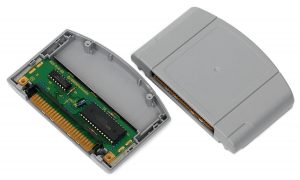Days are changing. The physical is becoming virtual. It started in the datacenter and now it’s in the network. The surge of NFV is creating a new market freeze. Telecoms are waiting. They don’t want to buy physical, but they haven’t seen enough success in the virtual network world. A common reason for lack of success has been the vendors and devices employed. Immature is a common descriptor for the marketplace. This blog intends to educate the readers on what devices are out there. Here I catalog those VNF types I have seen. More people need to prepare themselves for the new realities of this new virtual world. The issues of NFV adoption is one the industry must address.
Challenges in NFV Adoption
The facts on the ground are these: the maturity of vendors defines what is possible. If your vendor deems tracking next hop & neighbor topology as irrelevant, then you may not be able to perform accurate root cause analysis. If your vendor deems that MAC addresses can change every time you reboot a VNF, then your network ARP table cache will look crazy. Virtualization breaks the rules and some vendors are not ready to deal with that fallout. The greatest threat and obstacle to VNF adoption is the quality and quantity of VNFs available. This is a serious challenge. Out of all the stories I have heard and spoken – VNF vendor maturity is usually at the core of the issue. NFV adoption will continue to be challenged until process can be developed to mitigate the issue.

Legacy VNFs
Legacy VNFs
Let’s talk about categorizing the VNFs. We are seeing most VNFs falling into these silos. First there are legacy VNFs. They are your standard fare; just ported into a virtualized infrastructure. Virtual switches are usually imbedded into the hypervisor. Routers are common, lead by Cisco and Juniper. The mobile (3GPP) infrastructure is adopting VNFs so Ericsson, Nokia, and Cisco have offerings. Virtualized security has gotten plenty of traction. Most firewall PNFs have been ported, like Cisco, Fortinet, Palo Alto, and Checkpoint. These VNF types are PNFs emulated on a Linux OS. I compare the concept to game emulators. The “VNF” is nothing more than a Linux operating system emulating the BIOS of the pre-existing PNF. I call them “legacy” because all the integrations and interfaces are identical to their PNF brethren. What is interesting is the VNF image shipped has the Linux embedded. For any practical purpose you cannot manage the Linux operating system underneath. The VNF overrides the SSH, SNMP, telnet servers. So you cannot tell there is Linux underneath. Given that though, legacy VNFs are the easiest to manage. They are >90% like their PNF counterparts, which provides predictability.

MANO-enabled VNFs
MANO VNFs
Legacy is exactly that – old! Most product offerings focus on new services using new technologies. This is where you will experience the second type of VNF – MANO-enabled. These new VNFs support and act in concert with an orchestrated, elastic infrastructure. SD-WAN is a perfect example of new network technology with Velocloud/VMWare, Viptela/Cisco, and Versa as vendors. The trouble with these is many of the vendors don’t know the “rules”. Documentation is errant or missing. Common and core functionality support is missing – like the concept of interface monitoring. With giant gaps in functionality, especially from an assurance perspective, how can we maintain SLAs? When APIs have no documentation, you can bet that the vendor will not be able to provide best practices for KPIs. The new VNFs with new vendors have the hottest technology, but with the greatest challenges.

Custom VNFs
Custom VNFs
Rules? We don’t need rules? That is what the third VNF types is all about – custom VNFs. One of the advantages to virtualizing networks is telecom can create their own VNFs. Think this is not likely? Well one of the first customers I talked to used a customer VNF. They used a Linux OS firewalls with custom code to configure and manage them. Sprint has C3PO that will be using open source mobile core components. These VNFs enable customers increased flexibility, but they can come with a price: lack of consistency. Managing custom VNFs ends up being identical to custom applications then network elements. The good news is that you will be able to influence the changes needed. The bad news is you may be having those conversations AFTER those devices roll into production. A DevOps process can help support managing them effectively. The challenge is your assurance and delivery tools will need support agile processes. Custom VNFs are the most challenging for operations. They flip the traditional sourcing and boarding models predefined in the industry.

On-boarding Strategy
Onboarding VNFs
With such a diversity in VNF types, how can operations ensure proper engineering new services and offerings based up them? I call it an “on-boarding strategy”. When new VNFs are being planned or explored, operations must be involved to perform a proper assessment. This assessment must be holistic, including a multitude of different items. While many of these items are common in the PNF world, they have different levels of importance in the VNF world.
Example Checklist
Having a mature on-boarding strategy addresses NFV adoption. Below is my simplistic list, my recommendation is that you build you own:
-
Fault – This includes service and non-service affecting issue and log collection. Its import to understand the protocol, format, and overhead required.
-
Performance – This includes counters, KPIs, and KQIs associated to the technology. Passive vs active collection as well as protocol/format creates challenges.
-
Inventory – This includes interfaces and “slot/card” information. Protocol/format/overhead is important as well.
-
Configuration – This includes how to recreate the VNF. A VNF, like PNF, is a blank slate until it has a configuration. Recreating the VNF requires configuration collection, repository, and policy manager to restore.
-
Topology – The next hops by network layer (1/2/3/4, etc) allows for accurate root cause analysis. Without accuracy, your automation loses value.
-
Automation – Can you snapshot or change configuration without service impact? Understanding how well the VNF handles change allows better understanding of the limits of your tooling.
Being Proactive
Be proactive in its use so you can identify problems before they slow down your delivery. Many vendors offer similar VNFs. Say that from a contract perspective, switching between router vendors is insignificant. But let’s say they vary from an on-boarding requirements. The more information you have, the more chance you have at avoiding challenges and delay. The you avoid the delay, the more you NFV adoption will accelerate.

Impact on Tools
Impact on Tools
VNF maturity directly impacts your tooling. Automation becomes limited by the least common denominator of VNF capabilities. If you cannot perform accurate root cause analysis, then you cannot perform automation. If your VNF crashes when you perform a configuration pull, then automated restoration is limited. If the VNF stops logging under performance load, your operational processes are threatened. Virtualization of your network challenges legacy tools and processes like I have never seen. In my career, adopting a new tool to cover the new technology domain was enough – while increasing complexity and cost. NfV is different because it’s not a new domain, it unifies all domains.
When looking at tools, you should focus on three key areas. First is a no-brainer, scale. When you are changing the infrastructure to which all new network elements will run on – scale should be the first discussion point. Next is flexibility. When you are unifying all network domains with a common infrastructure, you need tools that cross domains . Lastly you need a tool with automation focus. Automation is how you will grow the network, but only if your tools support it. Your service delivery and assurance solutions need to embrace your new network infrastructure. You do not fight want them to fight you tooth and nail. With the proper tools and process, your NFV adoption will accelerate and enable operations.
Lessons Learned to Enable NFV Adoption
-
Virtualization is causing market confusion and hesitancy
- Vendor maturity one of the largest issues
-
There are three types of VNFs
- Legacy VNFs are like PNFs and you can expect similar feature/functionality, but with weird twists
-
MANO enabled VNFs have stable devices but inconsistency from a feature/functionality perspective
-
Custom VNFs that break all the rules which run more like applications then network
-
Create onboarding processes based upon your requirements. Make sure they are documented and easy to use by procurement, engineering, and vendors
- Make sure you have tools with a focus on flexibility, scale, and automation
My advice of NfV Adoption
-
Leverage process -> Development and enforce a VNF onboarding strategy
- Vendor management -> Only use VNFs from vendors you trust, that you have a strong relationship
-
Get Experience -> Model a network with the devices you want to use, then pilot that network with real traffic
Serial entrepreneur and operations subject matter expert who likes to help customers and partners achieve solutions that solve critical problems. Experience in traditional telecom, ITIL enterprise, global manage service providers, and datacenter hosting providers. Expertise in optical DWDM, MPLS networks, MEF Ethernet, COTS applications, custom applications, SDDC virtualized, and SDN/NFV virtualized infrastructure. Based out of Dallas, Texas US area and currently working for one of his founded companies – Monolith Software.

